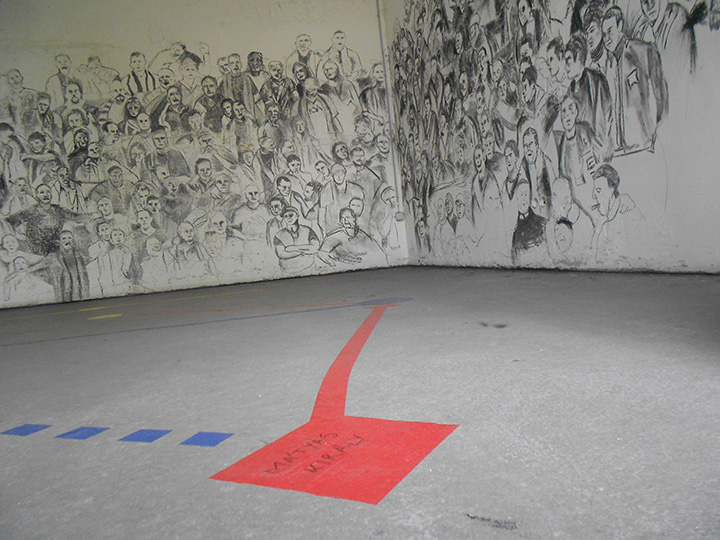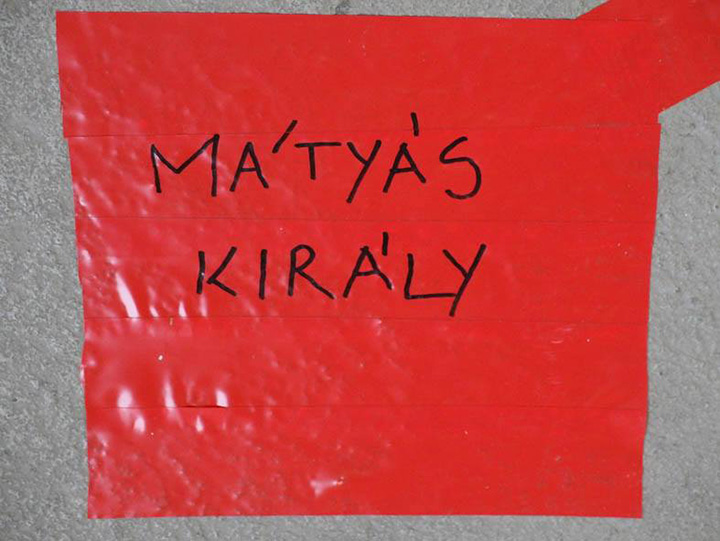Az MKE Intermédia tanszék első és másodévfolyamos hallgatóinak, valamint meghívott művészek – Derkovits Gyula, Böröcz András, Maurer Dóra, Mécs Miklós, Reischl Szilvia, Révész László László, Roskó Gábor – kiállítása.
Kurátor: Sugár János
Az 1514-ben kirobbant magyar parasztlázadás vezérén, Dózsa Györgyön a lázadást leverő főurak kegyetlen bosszút álltak. Fejébe izzó vaskoronát nyomtak, elevenen megsütötték és alvezéreit arra kényszerítették, hogy a még élő Dózsa húsából egyenek. A korabeli viszonyok között is kirívóan kegyetlen büntetés célja az örök időkre szóló elrettentés volt. Az urai ellen fellázadó Dózsa képét elöször tehát a hatalom határozta meg, és ha kellett, ezt a korabeli művészeti ábrázolások hűen követték, hiszen világos volt a megrendelő – szállító viszony. Ahogy ez lassan föllazult, a XIX. század második felétől kezdve, úgy előbb az írók, majd a festő Derkovits Gyula változtattak alapvetően az addig hirdetett Dózsa értelmezésen, a hivatalostól radikálisan eltérően bemutatva a történetet. Ebben az esetben az új hatalom követte a művészeket, és 1945 után hivatalosan is hős lett a lázadóból, és ennek megfelelően, a megrendelő – szállító viszony értelmében, számos köztéri Dózsa ábrázolás született. A festészet, grafika műfajában egy spontánabb és zavarosabb Dózsa hullám követte ezt a folyamatot. Ebből a tengerből egyedül Maurer Dóra Keressük Dózsát c. műve emelkedik ki, mert a Dózsa mémhez az elődökhöz méltó komolysággal ez tudott csak hozzászólni, amennyiben annak manipuláltságára utalt. Ez a kiállítás ezen a szinten próbál hozzászólni a témához. http://tranzit.blog.hu/2013/11/26/nemzeti_energiaital
An exhibition of the first and second-year students of the Intermedia department at the Hungarian University of Fine Arts and invited artists – Gyula Derkovits, András Böröcz, Dóra Maurer, Miklós Mécs, Szilvia Reischl, László László Révész, Gábor Roskó. Curator: János Sugár
The noblemen crushing the Hungarian peasant rebellion of 1514 took cruel vengeance on its leader, György Dózsa. They put a red-hot iron crown on his head, they burnt him alive, and forced Dózsa’s captains to eat from his flesh while he was still alive. The aim of the punishment, which was extremely cruel even by medieval standards was deterrence forever. Therefore, the image Dózsa rebelling against his lords was first defined by the ruling power, and contemporary artistic representations followed it faithfully, since the comissioner–supplier relationship was clear. This image gradually loosened from the second half of the 19th century – first writers, then the painter Gyula Derkovits started to fundamentally alter the existing Dózsa-interpretation, presenting the story in a radically different way from the official narrative. In this case, the new power followed the artists, and after 1945 the rebel officially became a hero. As a result, in line with the commissioner-supplier relationship, numerous public representations of Dózsa were born. In the field of painting and graphics a more spontaneous and diffuse Dózsa-wave followed this process. Of this multitude of works, only We’re Looking for Dózsa by Dóra Maurer is a notable exception, because this was the only work that was able to address the Dózsa-meme with a seriousness worthy of its predecessors, alluding to its manipulated nature. This exhibition intends to comment on the topic on this level. http://tranzit.blog.hu/2013/11/26/nemzeti_energiaital

































